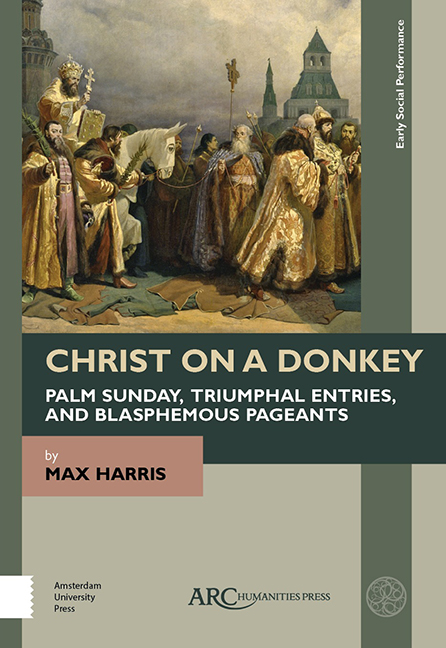15 - The Lord God Belongs to the Butchers
Published online by Cambridge University Press: 20 November 2020
Summary
IN AUGSBURG, ESSEN, and Zurich, the palmesel belonged to a prestigious urban church or abbey. This was not the case everywhere. Steinen, the home of the earliest surviving palmesel, was a much smaller community; it is not known who owned its palmesel in the eleventh century. In late fourteenth-century Zurzach, a small town about twentysix miles northwest of Zurich on the south (Swiss) bank of the Rhine, the palmesel was pulled in procession by farm labourers, and assigned a much more modest role than its kin in Essen. A surviving ritual book from around 1370 in Zurzach's Collegiate Church of Saint Verena makes it clear that the crucifix, rather than the palmesel, was the clerically sanctioned star of the community's Palm Sunday procession. The rubrics grant that “some of our farmworkers go ahead [of the procession] pulling the wagon with the image sitting on a donkey,” but it is the veiled Lenten cross that occupies the privileged position at the rear of the procession, surrounded by choirboys, deacons, subdeacons, and finally the dean. Even so, the Palm Sunday cross in Zurzach anticipated Good Friday rather than military victory. At a stop somewhere in the open countryside, the veil was removed from the crucifix, which was then laid flat on the ground, protected beneath by a large cloth. While hymns and antiphons were sung, the dean struck the crucified Christ with a palm branch, a priest's maniple was thrown to recall the crowd casting garments before Christ, and then everyone present threw palm branches at the crucifix. The ritual book makes no further mention of the palmesel, leaving the impression that the clergy only reluctantly allowed the peasants’ palmesel even a small part in the procession.
Palmesels in some major urban settings could also be associated with lower caste laity rather than with the clergy. When the German king and future emperor Maximilian I visited the free imperial city of Schwäbisch Hall for Palm Sunday in 1489, he took part in the customary procession of “the Lord Christ sitting on a donkey” (der Herr Christus auf einem Esel sitzend) from the Langenfeld Gate to Saint Michael's Church.
- Type
- Chapter
- Information
- Publisher: Amsterdam University PressPrint publication year: 2019



